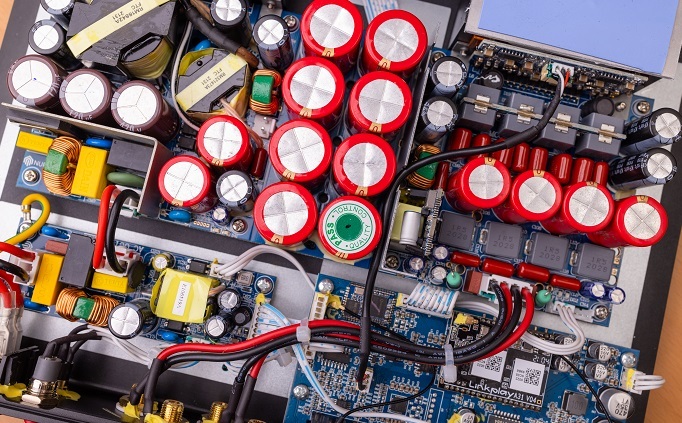
 Data Structure
Data Structure Networking
Networking RDBMS
RDBMS Operating System
Operating System Java
Java MS Excel
MS Excel iOS
iOS HTML
HTML CSS
CSS Android
Android Python
Python C Programming
C Programming C++
C++ C#
C# MongoDB
MongoDB MySQL
MySQL Javascript
Javascript PHP
PHP
- Selected Reading
- UPSC IAS Exams Notes
- Developer's Best Practices
- Questions and Answers
- Effective Resume Writing
- HR Interview Questions
- Computer Glossary
- Who is Who
What is the full form of EISA?
Introduction
Extended Industry Standard Architecture (EISA) is a computer bus standard that was introduced in 1988 as an expansion to the prior ISA (Industry Standard Architecture) standard. EISA was created by a consortium of nine companies, including Compaq, HP, and IBM, in reaction to the impediments of ISA.

EISA given quicker information exchange rates, more memory capacity, and superior execution for peripherals such as design cards and hard drives. EISA was widely used in the 1990s and helped to set up the dominance of the IBM PC architecture in the computer industry. Whereas EISA is not in use, it played a critical part in the advancement of computer architecture and the development of the PC industry.
Features of EISA
The features of Extended Industry Standard Architecture (EISA) incorporate
32-bit data bus EISA supports a 32-bit data bus, which permits for quicker information exchange rates compared to the 16-bit data bus of ISA.
Expanded memory capacity EISA permits for up to 4GB of memory, compared to the 16MB constraint of ISA.
Progressed performance for peripherals EISA gives way better execution for peripherals such as illustration cards, hard drives, and organized cards, due to its faster information exchange rates and extended memory capacity.
Backward compatibility EISA is backward congruous with ISA, which implies that EISA frameworks can utilize ISA peripherals and vice versa.
Plug-and-play support EISA introduced support for plug-and-play gadgets, which streamlined the establishment of new equipment.
Industry-wide standard EISA was created by a consortium of leading computer companies, which helped to establish it as an industry-wide standard and contributed to its broad selection.
Advantages of EISA
The advantages of Extended Industry Standard Architecture (EISA) incorporate
Increased execution EISA's 32-bit information transport and increased memory capacity permitted for improved execution over the prior 16-bit ISA standard, particularly for high-performance peripherals such as graphics cards and hard drives.
Cost-effective EISA given moved forward execution over ISA at a moderately low fetch, making it an attractive alternative for both customers and businesses.
Comparison with Other Bus Architectures
Extended Industry Standard Architecture (EISA) was developed in reaction to the impediments of the prior Industry Standard Architecture (ISA) bus, and it was succeeded by other bus structures such as Peripheral Component Interconnect (PCI) and Accelerated Graphics Port (AGP). Here's a comparison of EISA with these other bus architectures
ISA EISA progressed upon ISA by giving a 32-bit information bus and expanded memory capacity, which permitted for improved execution and superior support for high-performance peripherals. EISA was also backward congruous with ISA, which permitted for existing ISA peripherals to proceed to be utilized with EISA frameworks.

PCI PCI was created in the early 1990s as a substitution for EISA. PCI is given even higher information transfer rates than EISA, as well as improved execution for peripherals such as sound cards and network cards. PCI also presented plug-and-play support for gadgets, which simplified the installation of new equipment.
AGP AGP was developed specifically for design cards and given indeed higher information transfer rates than PCI. AGP also included highlights such as sideband tending to and hardware acceleration for 3D graphics.
Conclusion
In conclusion, Extended Industry Standard Architecture (EISA) was a critical computer bus standard that was introduced in 1988 as an extension to the prior ISA standard. EISA provided faster information transfer rates, expanded memory capacity, and improved execution for peripherals such as illustration cards and difficult drives.
EISA was widely embraced in the 1990s and helped to establish the dominance of the IBM PC architecture in the computer industry. While EISA is not in use, it played an important part in the advancement of computer engineering and cleared the way for future standards such as PCI and AGP.
FAQs
Q1. What distinguishes PCI and EISA from one another?
Ans: Early in the 1990s, PCI, a more recent bus architecture, was created to take the place of EISA. Compared to EISA, PCI offers even higher data transfer speeds and better peripheral performance, including sound cards and network cards. Additionally, PCI enabled plug-and-play device support, which made it easier to set up new hardware.
Q2. Does EISA still exist?
Ans: EISA is not still in use. Later, newer standards like PCI and AGP took their place.
Q3. How did EISA contribute to the development of computer architecture?
Ans: Due to its superior performance to the preceding ISA standard and its role in laying the groundwork for future standards, EISA was crucial in the development of computer architecture.

